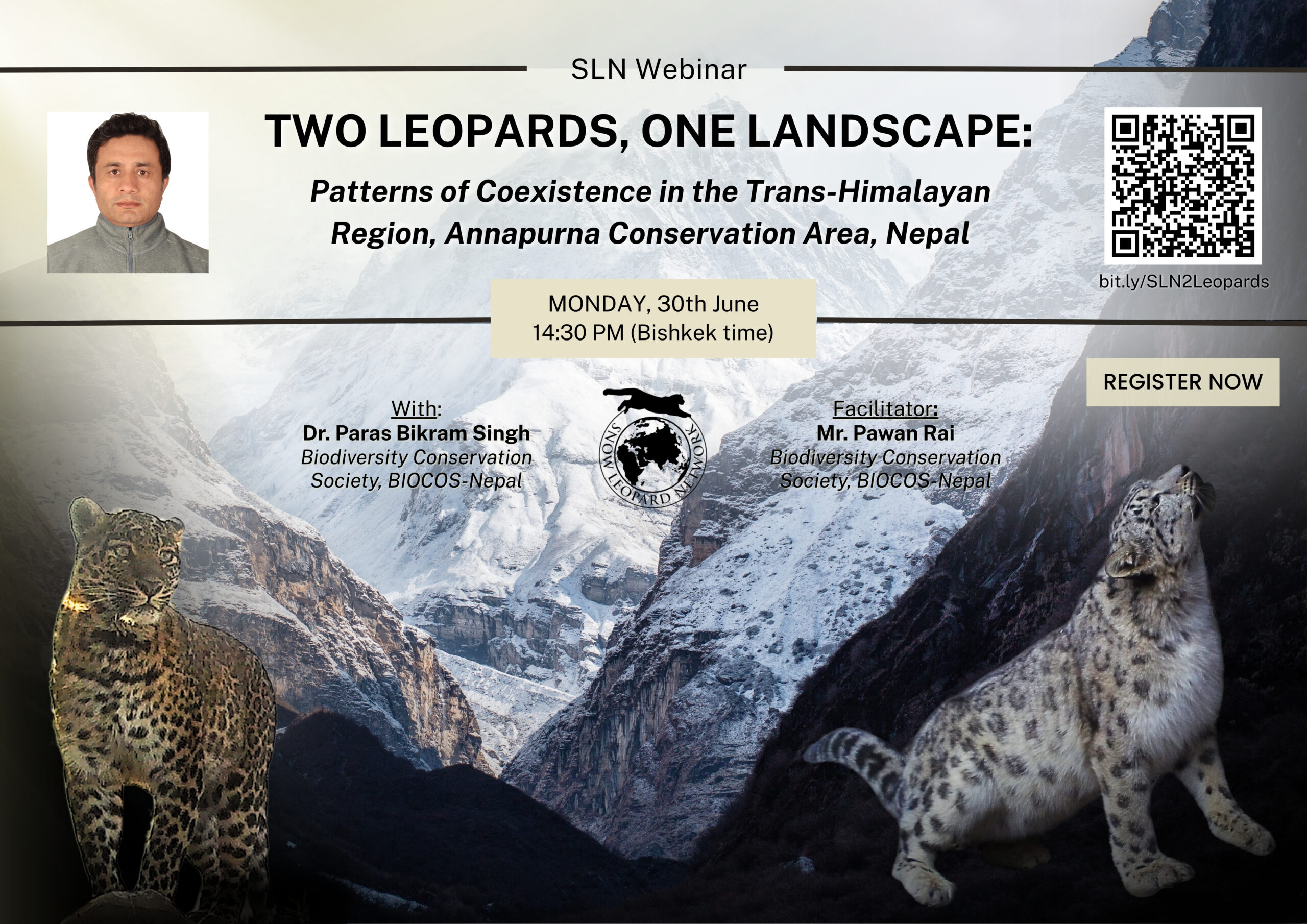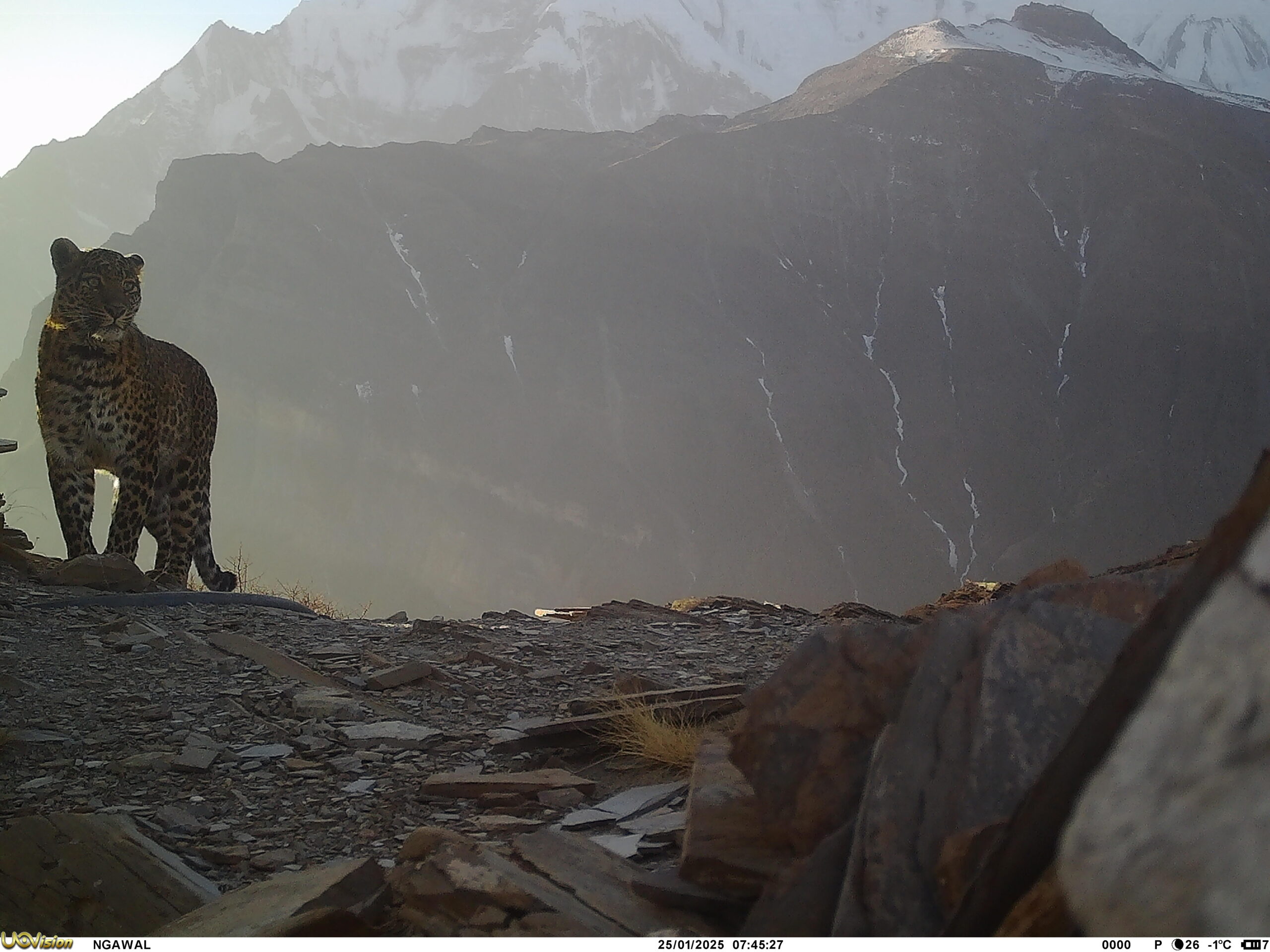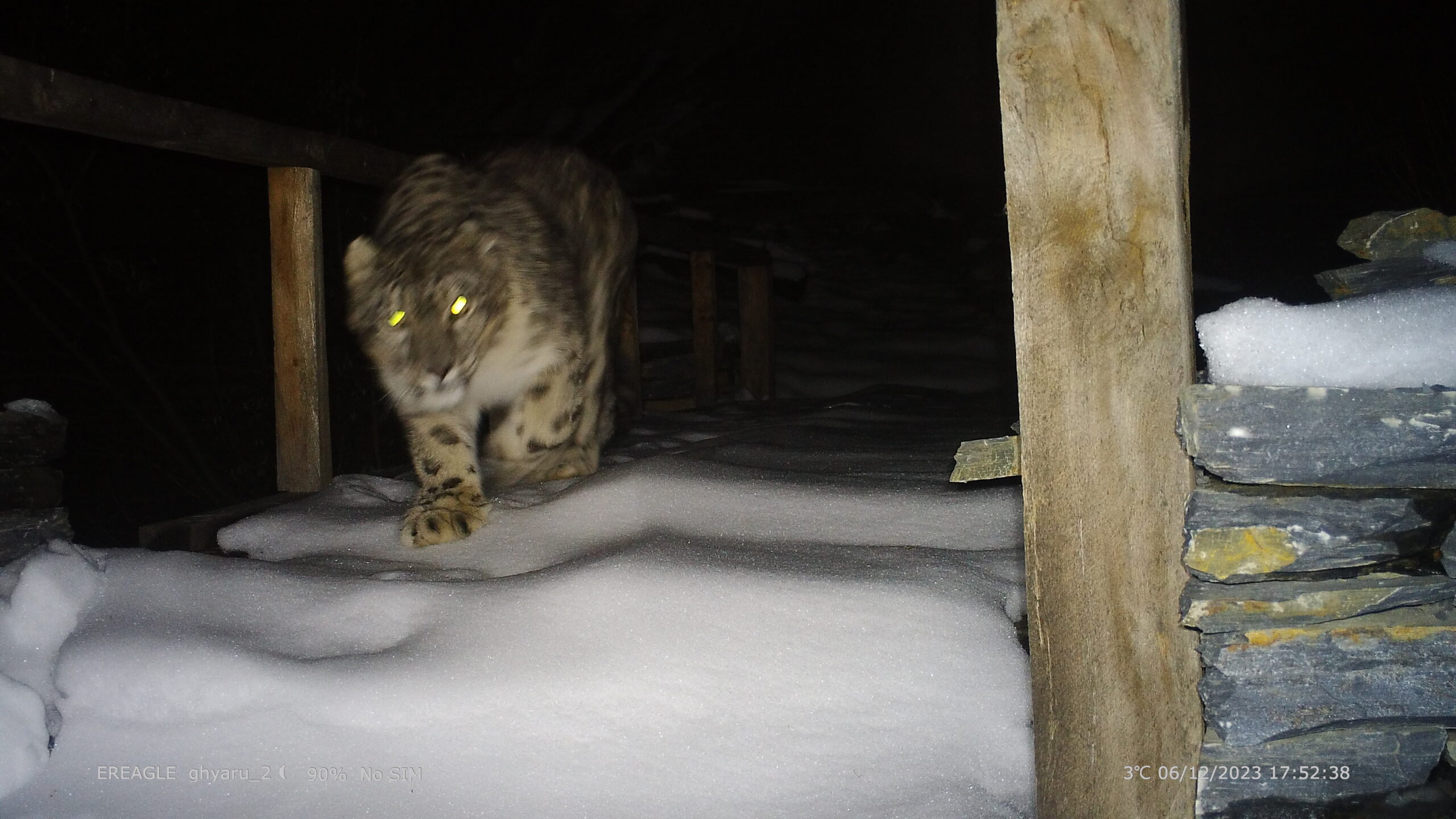About the Talk:
SLN invites you to our upcoming webinar presentation that delves into the ecological coexistence of two apex predators—the snow leopard (Panthera uncia) and the common leopard (Panthera pardus)—within the trans-Himalayan region of Nepal. Drawing from a combination of historical accounts dating back to the 1950s and extensive winter camera trap data collected between 2016 and 2023 in the Annapurna Conservation Area (elevations 3,100–4,696 m), the study challenges conventional assumptions about the recent appearance of common leopards at high altitudes being solely a result of climate change.
Instead, the findings reveal a long-standing adaptation of common leopards to high-altitude environments, including successful foraging and breeding in extreme winter conditions with temperatures as low as -18°C. Spatial analysis indicates that the likelihood of species co-occurrence increases in areas near open forest canopies and farmland, and decreases with proximity to snowline and steeper terrain—underscoring the snow leopard’s affinity for rugged landscapes.
By examining spatial, temporal, and ecological interactions, this presentation provides a deeper understanding of the factors enabling the coexistence of these two charismatic felids and offers valuable guidance for future conservation planning in the high Himalayas.
About our Presenter:
Dr. Paras Bikram Singh is a conservation ecologist from Nepal with a PhD in Ecology from the Chinese Academy of Sciences. He worked for six years in the Annapurna Conservation Area (ACA) as a conservation officer. During his PhD and time with ACA, Paras carried out extensive field research in the Himalayas, focusing particularly on Himalayan musk deer and large carnivores such as the snow leopard. Paras is currently the Director of BIOCOS Nepal (www.biocosnepal.org.np), an organization dedicated to biodiversity conservation. His approach combines scientific research with community-based conservation initiatives aimed at protecting threatened species. Paras’s work has significantly contributed to understanding species distribution, habitat use, and coexistence dynamics in the Annapurna Himalayan region of Nepal. He has authored over 35 peer-reviewed publications and remains actively involved in local conservation outreach. At BIOCOS, the current focus of research and conservation programs is on common leopards, snow leopards, red pandas, musk deer, and Nepal’s pheasants.
About our Facilitator:
Pawan Rai holds a Master’s degree in Environmental Science and has been working with BIOCOS Nepal since 2023. With a strong interest in ecology, he is actively engaged in wildlife research across Nepal, focusing on both ecological patterns and conservation challenges. His work emphasizes community-based conservation approaches that integrate local knowledge and participation. In addition to his field expertise, Pawan has a good background in GIS and remote sensing, which he effectively applies in spatial analysis and habitat mapping. He is also skilled in designing and managing conservation programs that are scientifically sound and socially inclusive.
Date/Time:
Monday, 30th June at 14:30 PM (Bishkek time)
Location:
ZOOM, to join this talk, REGISTER HERE
Please note:
- If you have never used Zoom before, we recommend that you try the link 10 minutes before the start of the lecture.
- Please feel free to write questions in the comment area and there will be time for questions/discussion at the end of the talk.
- Please note that the session will be recorded and later featured on the SLN website. If you have concerns about this please let us know before the session





